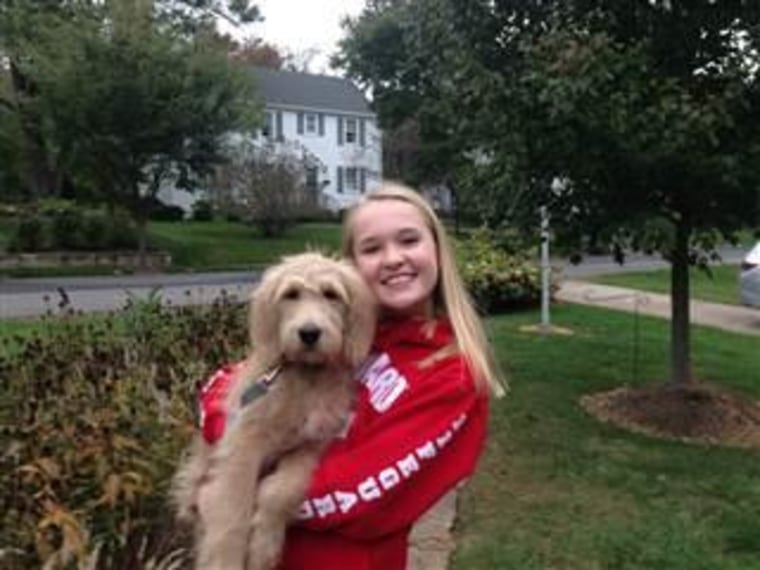They pop up out of nowhere and land like a punch to the gut: images of our smiling friends huddled around a birthday cake, splashing at the beach or just hanging out — without us. Now imagine that discovery from a child’s tender viewpoint.
Being excluded from social events has always been rough on kids. But tweens and teens today are much more likely to find out about what they are missing in our snap-and-share culture. And the real-time digital delivery can make the sting of exclusion that much more painful.

“Kids are less likely to be spared because it’s not just whispered about on Monday morning,” says Dr. Paul Donahue, a child psychologist who lectures on technology. “It’s kind of a blaring-out on social media right away and over the course of the next couple of days.
“The idea of the visuals and the video is much more painful, and the younger the kids, the more painful it is,” he added.
Grace Nazarian of Catonsville, Maryland, has been there. She felt a lump in her throat and then was hot with anger when the photos appeared on Instagram last year during seventh grade. Twenty-five to 30 girls, including all of her closest friends, were at a roller rink for a surprise birthday party. She was sad, hurt and disappointed she didn’t make the invite list.
“I felt like I was the only one not there,” recalled Grace, 13. “Everyone looked like they were having a really good time. I wished I was there. I was thinking, they’re having a good time without me. Then I just felt really, really bad about myself.”
Worse still, her mother, Dr. Jeanette Nazarian, learned about the party even before her daughter, as she found herself inexplicably tagged in Facebook photos of the event along with other parents whose kids were there.
“It was so upsetting to see her so hurt and so left out,” she said, adding that the episode prompted her to write on Facebook: “I hated 7th grade when I was in it and I hate it now … grrrrr.”
The birthday girl apologized to Grace, saying her mother had made the guest list, and Grace got over it in about a day.
Most kids aren’t posting with the intent to make others feel bad, experts say. They’re just trying to be cool and are not thinking about the future. And not every child is bothered by every instance of exclusion.
“There are kids who are able to be on social media and this is not their predominant experience,” said Devorah Heitner, founder of the consulting practice Raising Digital Natives. “For some kids, this is a real issue.”
The children most likely to be affected are in fourth, fifth and sixth grades, when kids jockey for friends and popularity while often using social apps earlier than the minimum age of 13, and those who are socially vulnerable for other reasons, Donahue said.
“A lot of it has to do with kids’ own sense of self-esteem and how confident they are about their relationships,” he said. “If it’s somebody that’s somewhat peripheral to them, kids who are more confident can take that with a grain of salt. If it’s somebody they feel was in their inner circle, there’s more of an opportunity for hurt feelings.”
By high school, many teens are better able to ignore it, and they’re not as likely to be hanging onto every photo and every experience they come across, the way younger kids new to social media and the changing social scene may be, Donahue said.
Most people know they’re not going to be invited to every party, and nobody believes children are going to stop sharing fun party pics any time soon. But thinking about the potential for who may see the pictures before posting can go a long way toward avoiding hurt feelings.
Ideas for minimizing the pain, from experts:
- Circulate photos from small gatherings only among those who attended.
- Delay the posting to blur the exact time of the event.
- Limit the number of photos to three to avoid looking obnoxious, experts suggest.
Grace tries to show restraint by not posting photos of everyone together at a party; instead she will share a picture of her and one other person there. If excluded kids are upset, Donahue urges parents to focus on their children’s true friends. Kids really need just three solid friendships, he says.
And Heitner says parents should model sensitivity in what they post, and also act gracefully when they themselves have been left out. “Because it’s a near-universal experience,” she said, “we need to cultivate resilience in our children around this experience.”
After the roller-skating party, Grace and her parents discussed being considerate and thinking twice before putting up photos. Since then, a few smaller-scale instances of exclusion surfaced online, but she has gained some perspective.
“If you really think about it, after a while, it’s not that big of a deal,” Grace said, “but at the moment you’re thinking: ‘This isn’t fair. I want to be invited, too.’”
Lisa A. Flam is a news and lifestyles reporter in New York. Follow her on Twitter.
This article was originally published Mar. 16, 2015 at 11:48 a.m. ET.